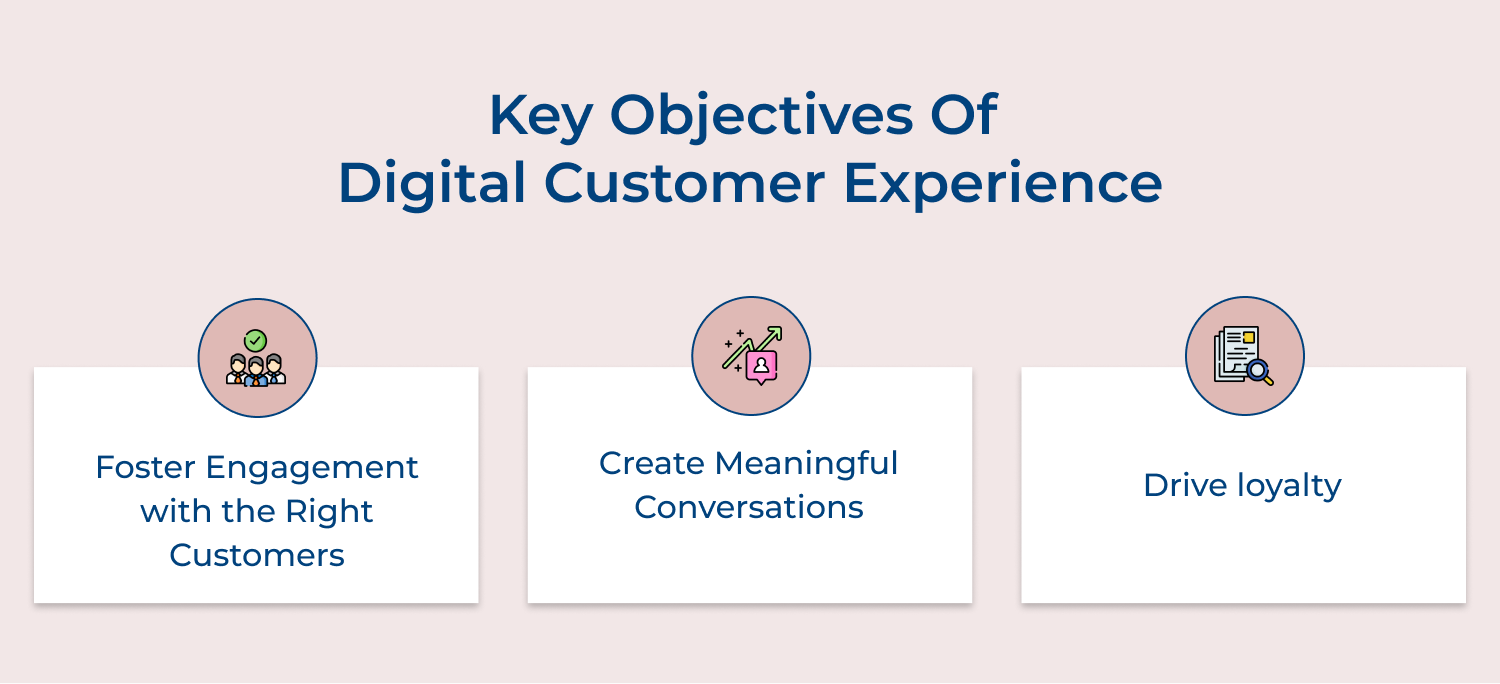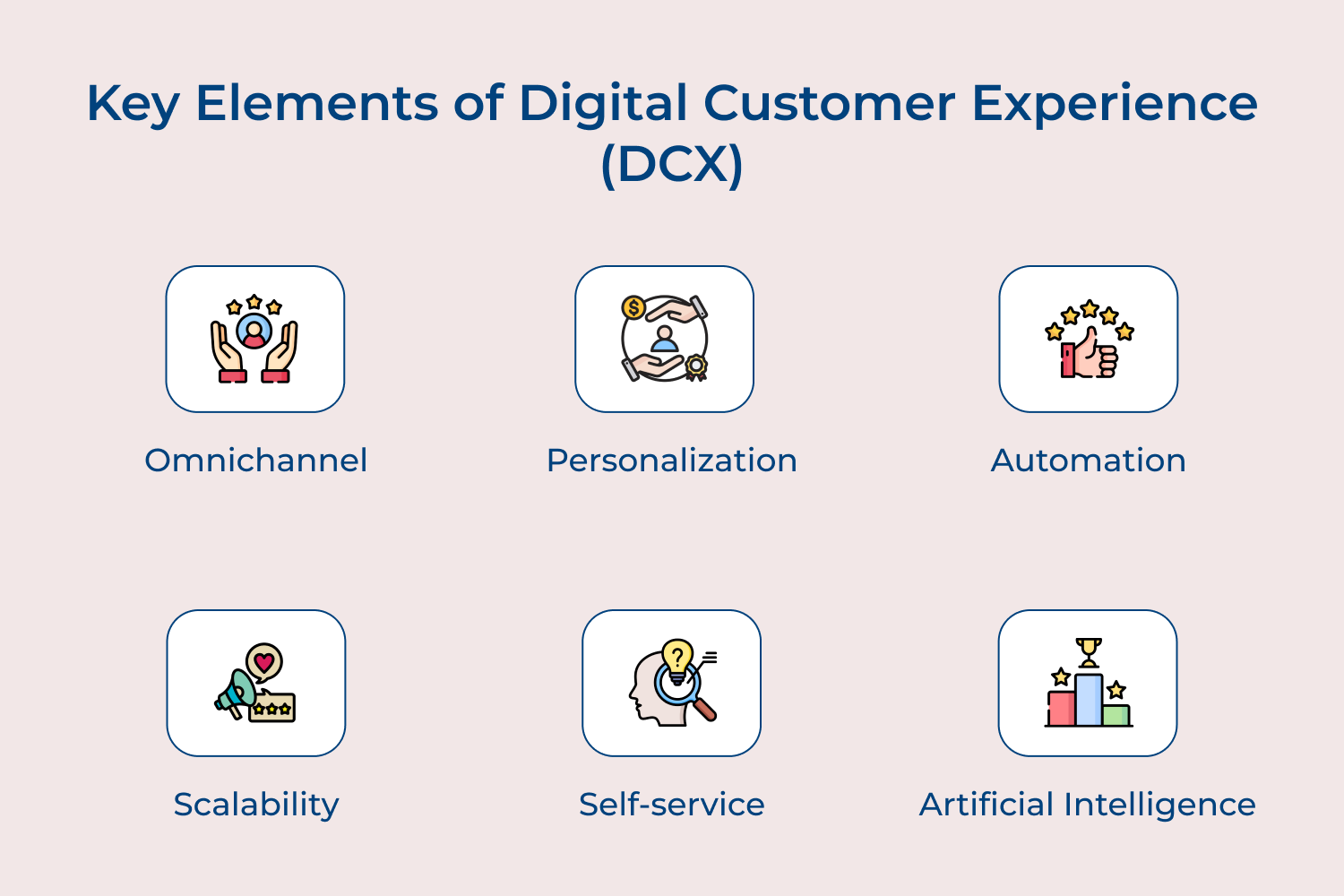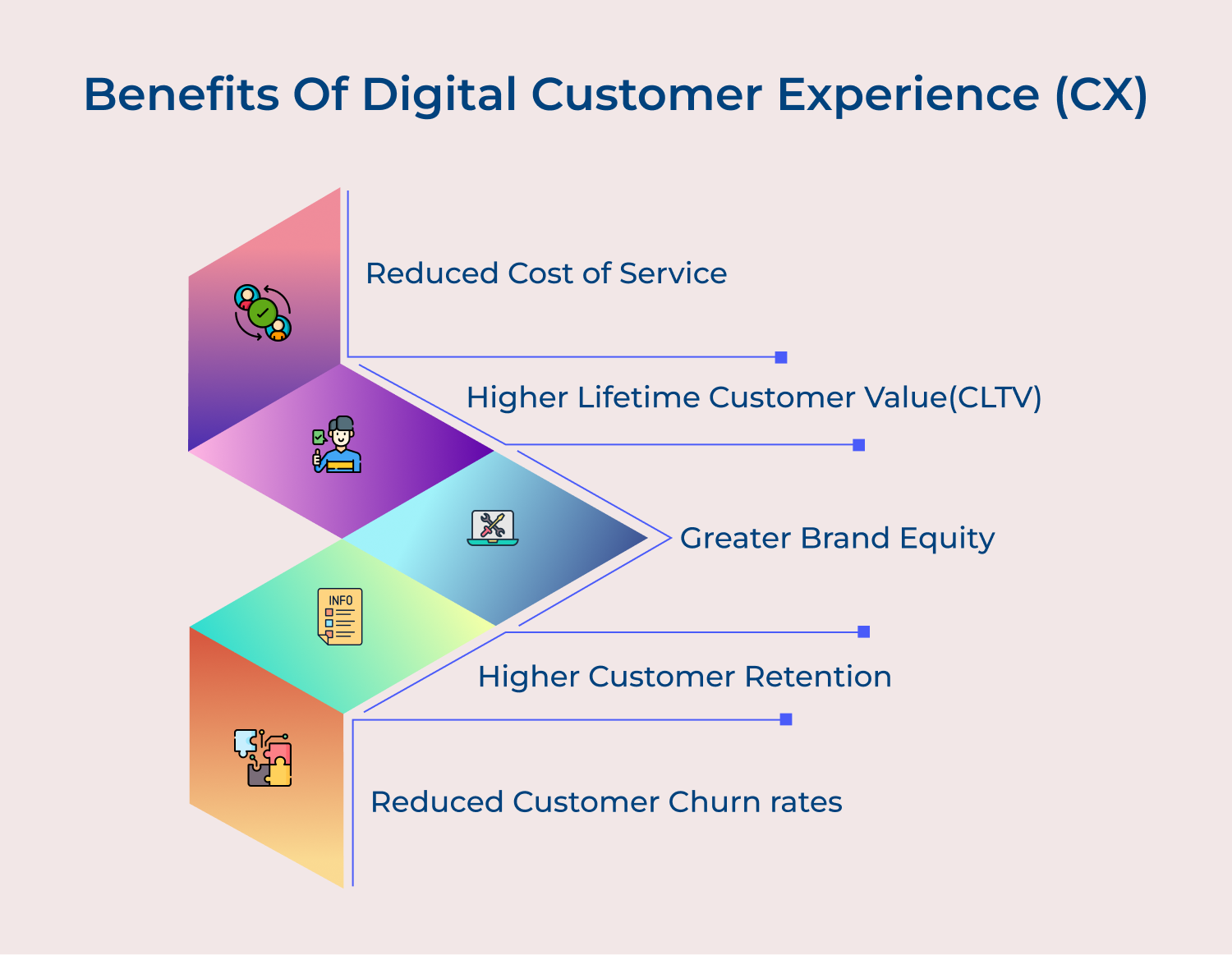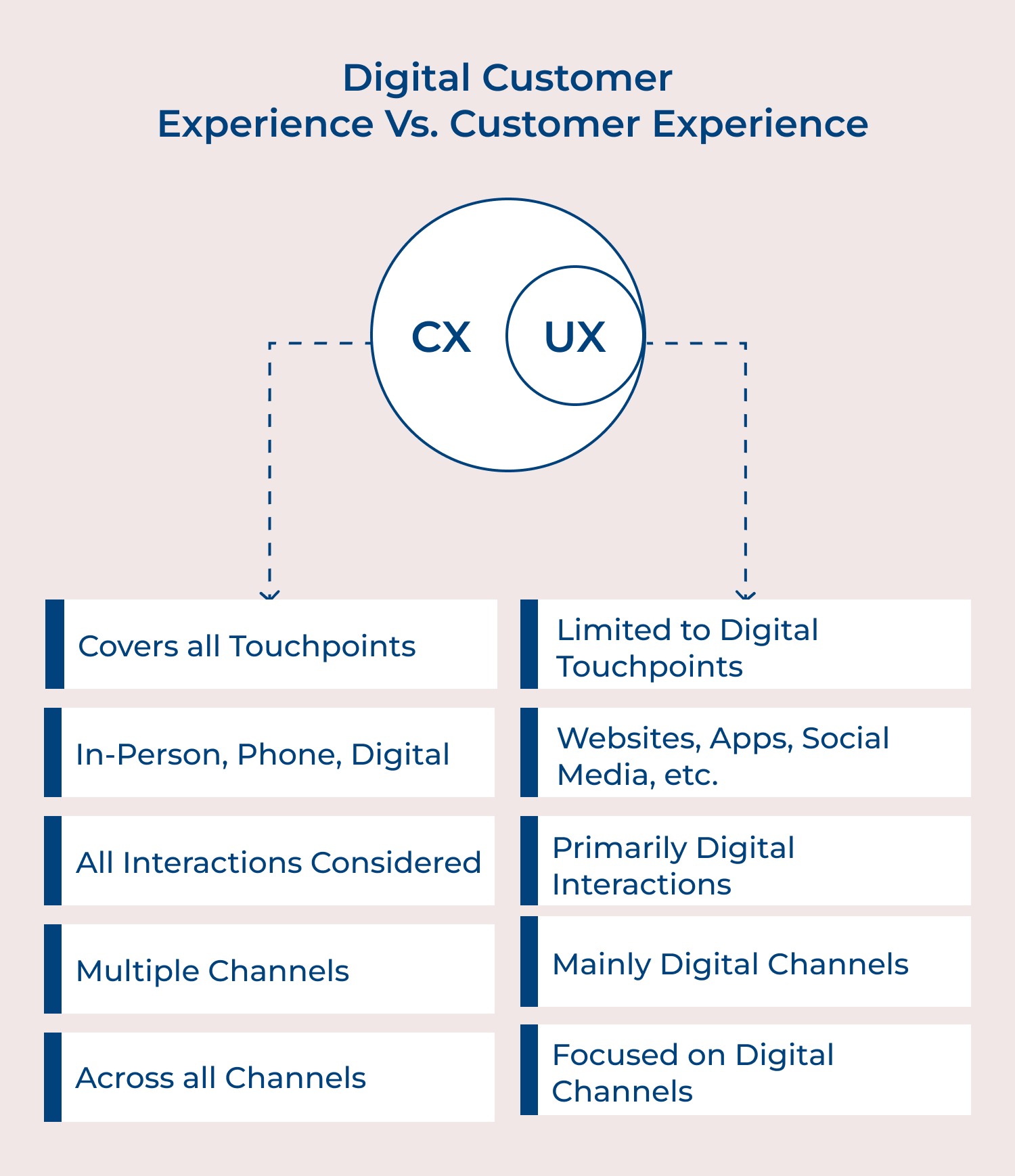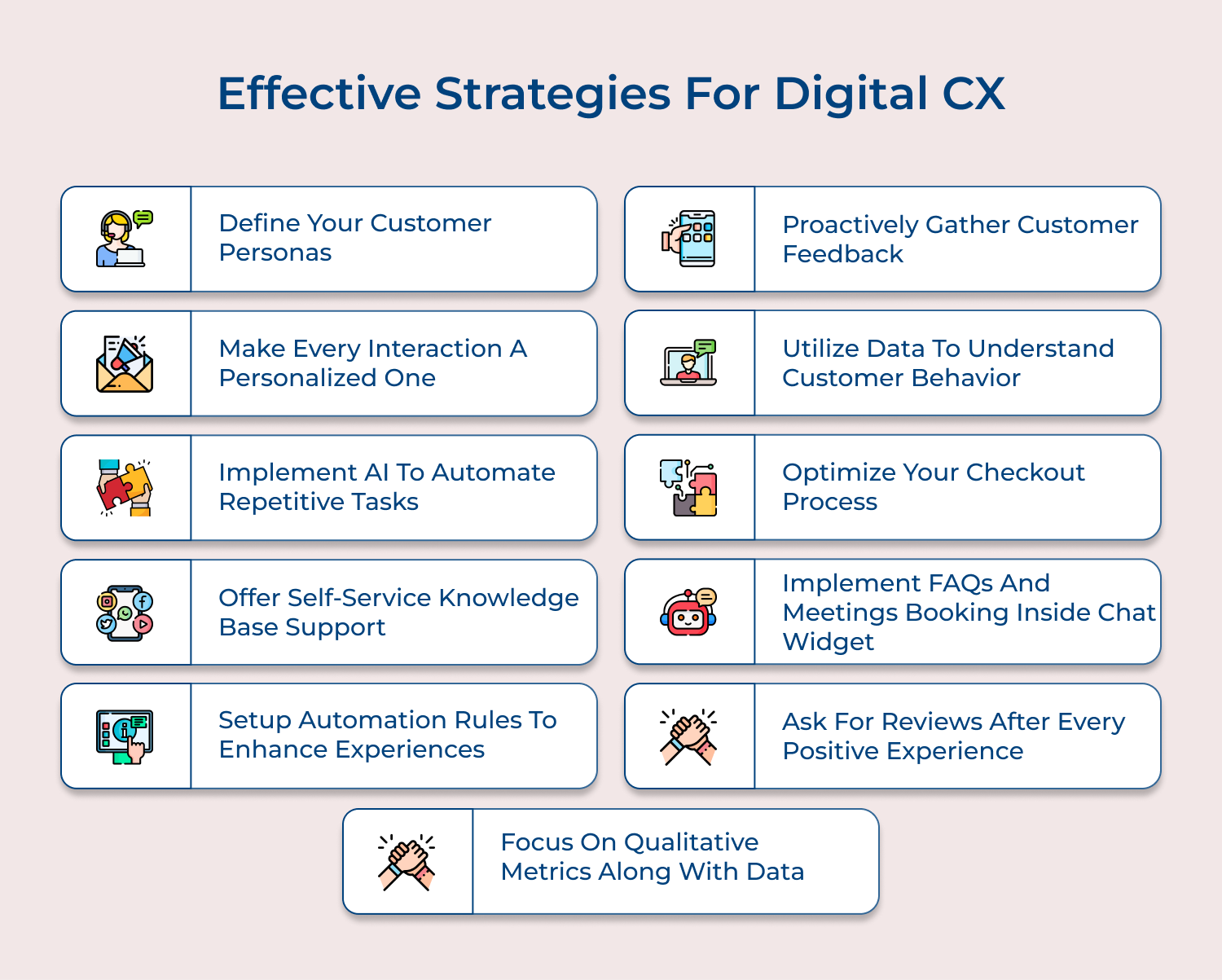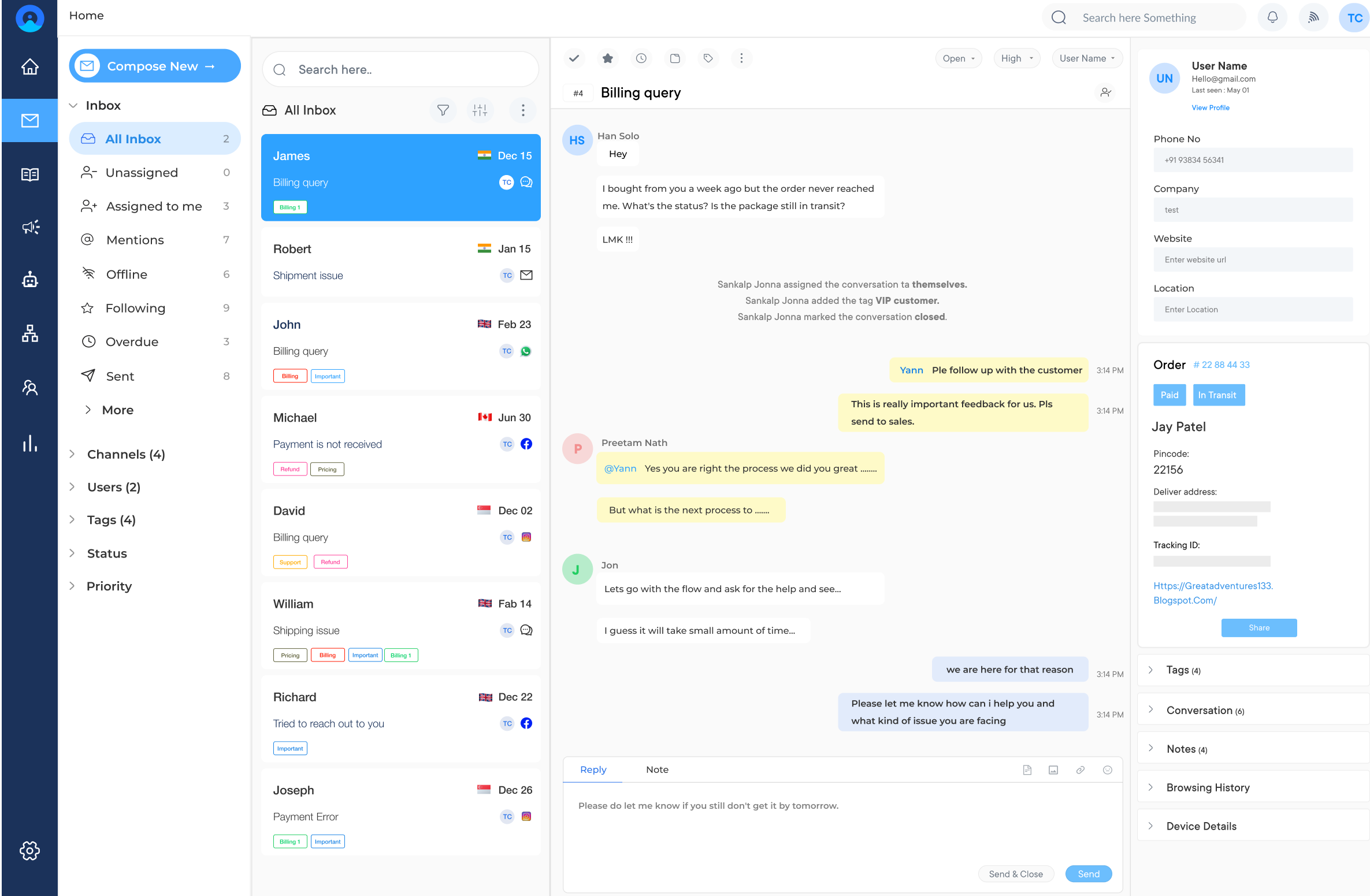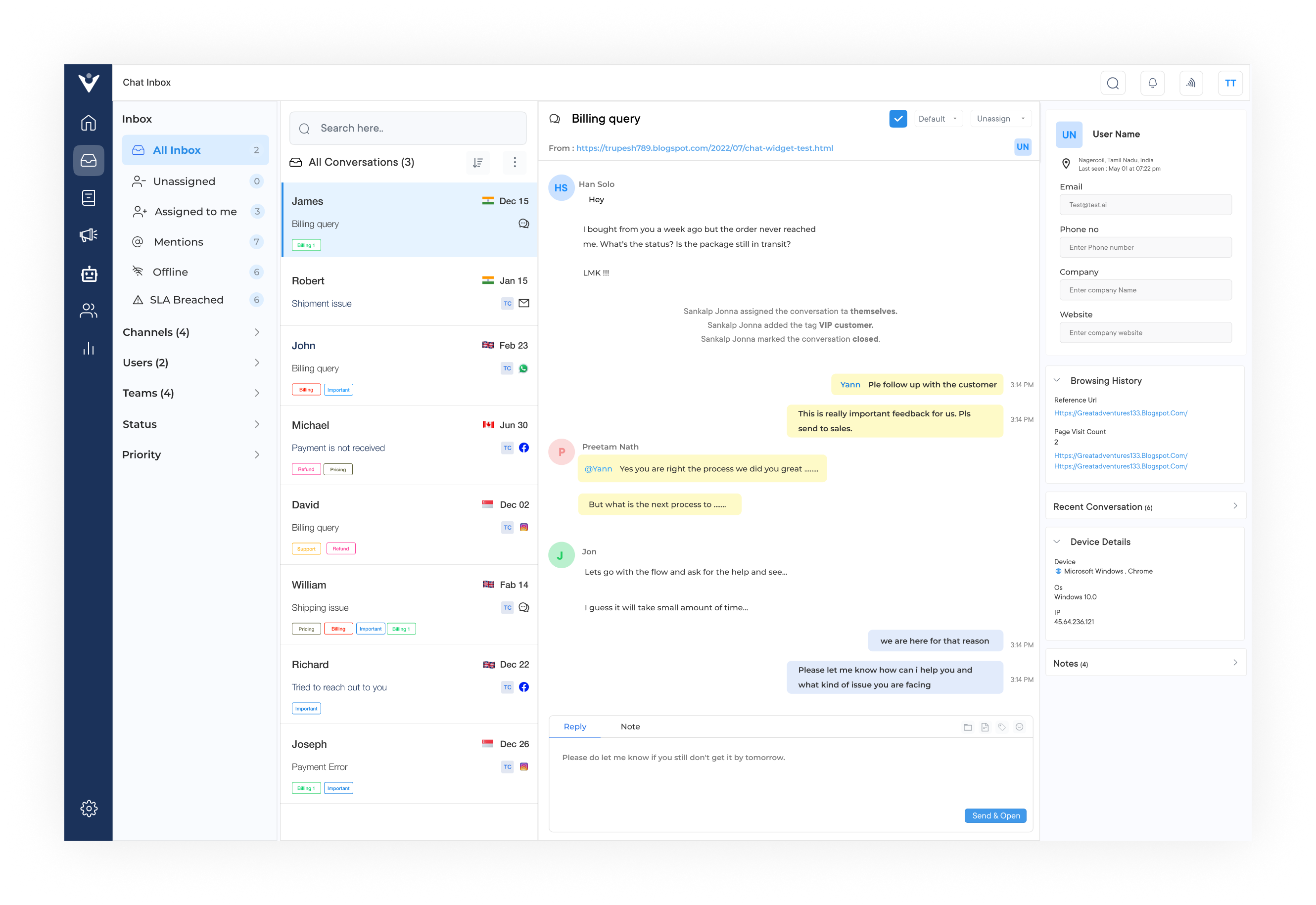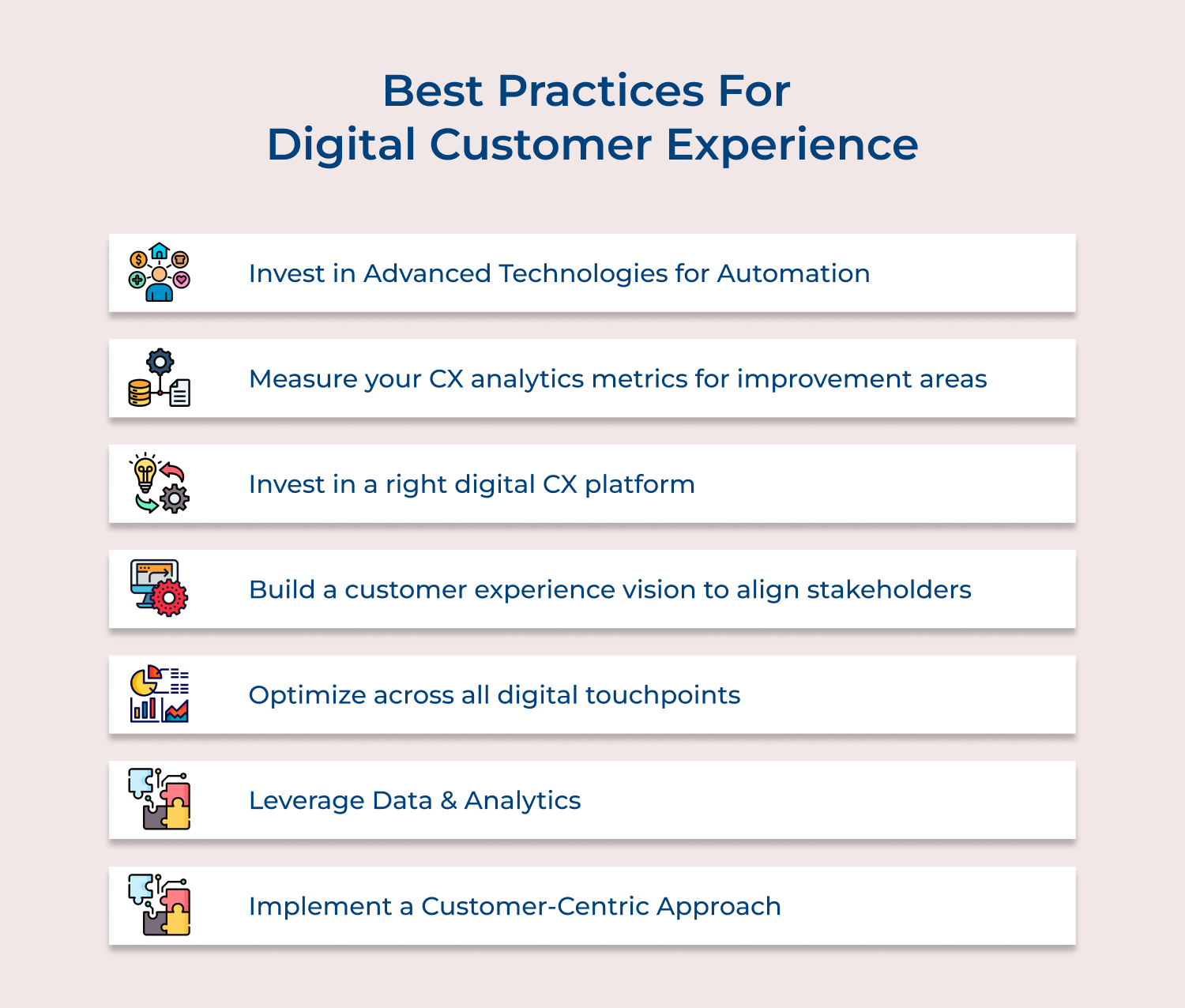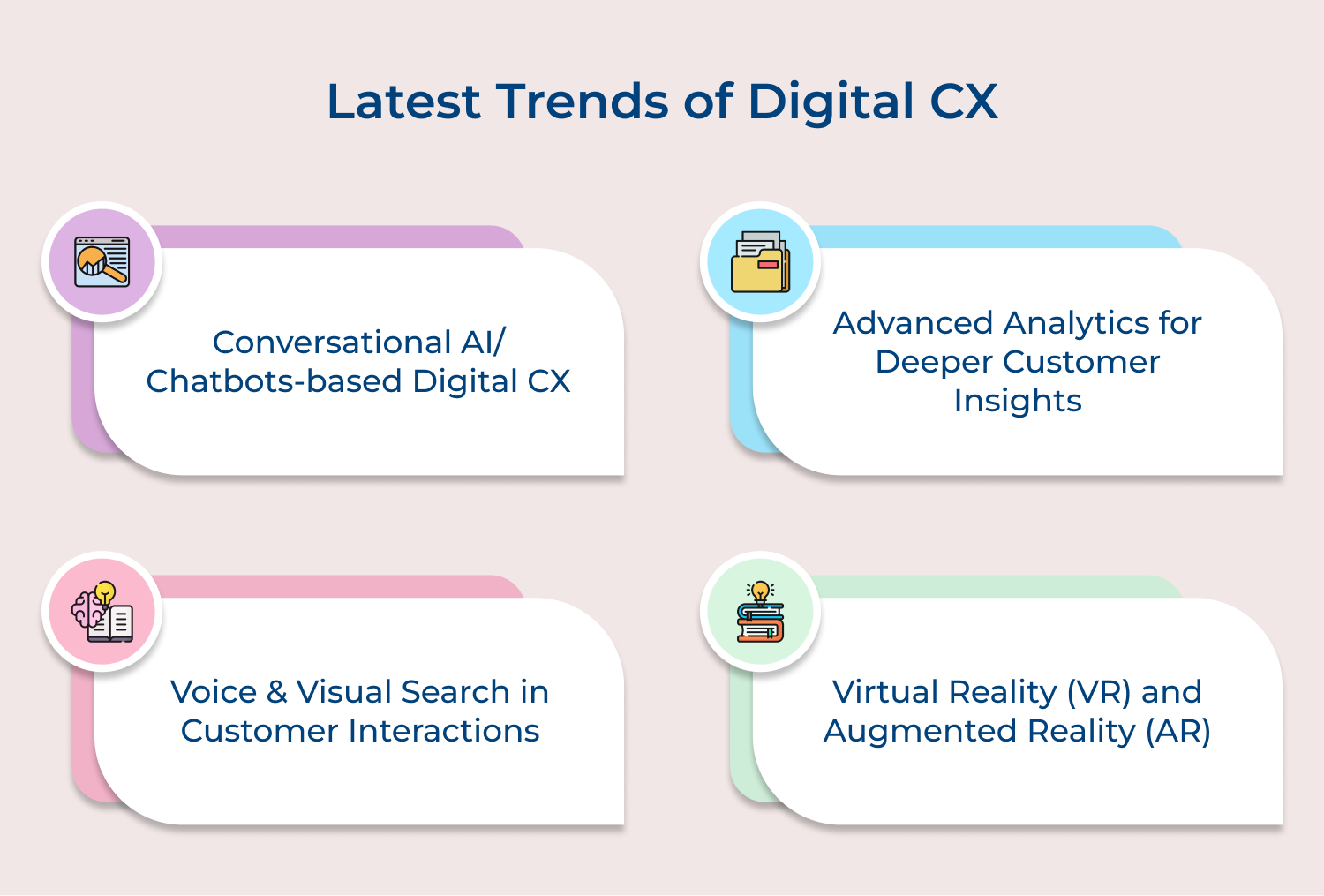We have summarized proven strategies for an effective digital customer experience:
1. Define Your Customer Personas
Customer personas should be the foundation of your digital CX strategy. Understanding who you are trying to reach with your message is key to making sure it resonates with the right people.
Your personas should include information like age, gender, interests and buying motives as well as what they’re looking for from an online experience in terms of ease-of-use and availability of helpful content.
The more detailed your personas, the better – this will help you tailor your content for each audience so that it resonates personally with each individual visitor.
2. Make Every Interaction a Personalized One
Customers expect a personalized digital experience when they go to engage with a brand or business online – anything less likely won’t receive positive attention and could lead to them turning away from your website altogether.
Hence businesses must use targeted messaging on their website by customizing their offers and content according to customer’s past behavior or preferences. Also, offer personalized support through live chat or other forms of instant communication channels like WhatsApp or Messenger.
Companies should also personalize communications post-transaction by taking advantage of marketing automation platforms that allow you to send follow-up communications based on trigger events.
3. Implement AI to Automate Repetitive Tasks
Amalgamation Artificial Intelligence (AI) in Customer Experience (CX) is in vogue.
AI technology can be used to automate repetitive tasks, freeing up time so that resources can use that time in other business priorities. By leveraging AI-driven automation tools, brands can reduce service costs while improving response times and accuracy.
Deployment of AI can result in providing excellent digital customer experience as users do not have to wait – they will receive instant and accurate personalized responses 24×7.
4. Offer Self-Service Knowledge Base Support
Regardless of whether there is a team available 24/7 or not, offering access to a knowledge base allows customers to find answers quickly on their schedule.
A well-structured knowledge base should include frequently asked questions, tutorials, articles, help guides or instructional videos so customers can troubleshoot problems without resorting to contacting your team for assistance.
Customers/Visitors should also be able to submit feedback on the quality of the content provided in your knowledge center – as it offers valuable insights into how helpful it is from a user point-of-view. Investing in quality digital CX is key if you want loyal customers who have a positive perception of your brand.
5. Setup Automation Rules to Enhance Experiences
Automating processes, such as customer service requests and onboarding procedures, can provide customers with streamlined experiences when interacting with your brand.
For example, setting up automated rules can manage all customer inquiries quickly & efficiently so that no customer query is left unresolved.
Automation rules can enhance the digital consumer experience in the following ways:
- These automation rules can be applied across multiple channels, including website live chat, email, and social media for improved response times.
- Use AI & Machine Learning technology to segment audiences according to their demands which will enable you to deliver personalized digital experiences at scale.
6. Proactively Gather Customer Feedback
The key to optimizing DCX is actively asking for customer feedback.
Gathering direct feedback from the prospects who interact with your brand can provide valuable insight into how your digital experiences could be improved over time – whether it’s through product updates or adjusting your messaging strategy.
Encouraging honest feedback from customers allows you to adapt to their needs but also measures levels of satisfaction and understanding of every CX touchpoint offered by your business.
7. Utilize Data to Understand Customer Behavior
Understanding customers on a deeper level is crucial for creating better online experiences. Digging deep into customer data can be the best way to understand consumer behavior and enhance digital experiences.
Businesses should analyze the data they have access to through sources such as web analytics platforms, customer feedback surveys and social media interactions to gain insights into how customers are behaving online.
Having relevant and accurate information in hand, brands can then tailor their DCX efforts towards specific user segments or demographics.
8. Optimize Your Checkout Process
Customers often abandon their carts during the checkout process if they feel any sort of confusion with the purchase flow. To prevent such scenarios to happen, companies must ensure that their checkout process is seamless.
Businesses can test various elements of their checkout page such as:
- Payment methods offered
- Design layout
- Call-to-actions
All these should be taken into consideration while collaborating with UX/UI professionals who know optimization goals like increased conversions rate and improved checkout workflow speed.
9. Implement FAQs and Meetings Booking Inside Chat Widget
When it comes to digital customer experience (CX), one of the most important strategies is streamlining user interactions with your business. There are several solutions available today that can help you do this, including chatbots.
Chatbots allow customers to ask questions or book appointments right inside a chat window without ever having to leave your site or speak directly with a representative. It makes it easier for customers to find answers quickly and easily, which does wonders for their overall satisfaction rates.
10. Ask For Reviews After Every Positive Experience
The power of social proof cannot be understated when it comes to digital consumer experience. Positive customer reviews can increase customer spending by 31%
Asking customers for reviews after they have had a positive experience with your business is a great way of getting social proof on any platform you use (e.g website/ Facebook page).
Positive reviews help other potential customers gain trust in your product or service as well as make them more likely to engage in transactions with your company in the future, thus boosting revenue growth over time!
11. Focus On Qualitative Metrics Along with Data
For the companies to understand their customer base and deliver an effective DCX strategy they must look beyond just quantitative data like click-through rates or conversion numbers.
Businesses must also track qualitative metrics such as sentiment analysis and natural language processing. These metrics provide valuable insights into how customers feel about certain aspects of their experiences and can help inform decision making when it comes to creating strategies tailored specifically towards individual user needs.
Best Digital Customer Experience (DCX) Tools
Digital consumer experience is quickly becoming a necessity for businesses that want to stay ahead. Brands that invest in the best DCX tools will be able to provide their customers with an enhanced, personalized, and seamless digital approach.
Let us discuss the best DCX tools that can fit into your business perfectly.
1. Omni24

